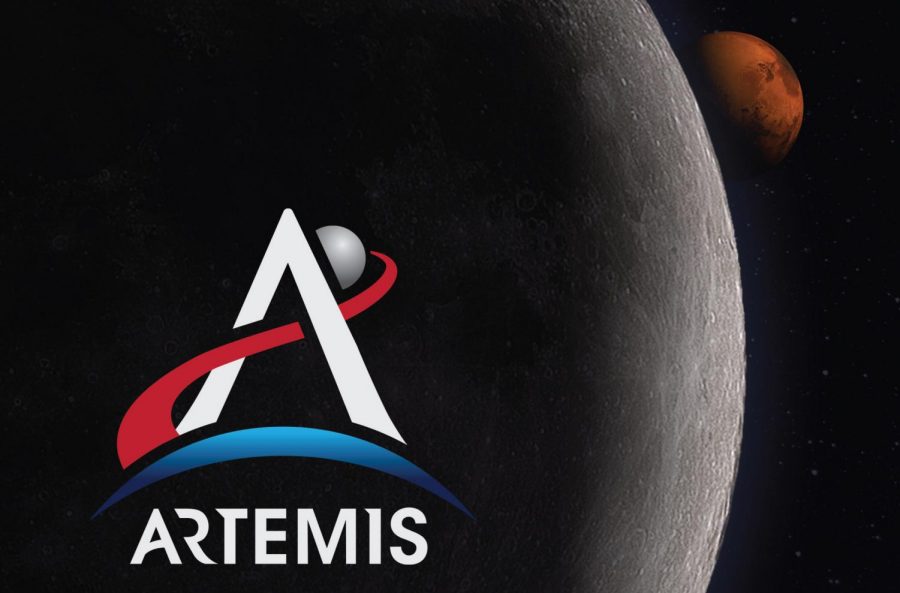NASA’s Artemis Program
Everything You Need to Know
When was the fervor of lunar travel last felt in the United States? It has been close to 50 years since the last astronauts touched the lunar surface on the Apollo 17 mission. In those 50 years, there have been economic limitations, but with new technologies and partnerships in commercial space flight, NASA is not only planning to land a human on the moon, but to establish a long-term human presence on the moon by 2024.
The Artemis program was first proposed in 2017 under President Trump’s command to lead a human return to the moon in correspondence with other commercial and international partners. The plan was originally set to take place from 2020-2028 but was accelerated to 2024 to try and lessen the political friction during the course of the program.
In preparation, two crucial spacecraft are currently being tested: The Space Launch System (SLS), and the Orion spacecraft, which will be integrated after a successful hot-fire test. The SLS will act as the main launch vehicle for the Artemis lunar program.
Exceeding the previous 70-ton lift requirement set by Congress, the second variant of the SLS is rated to lift 95 metric tons into low Earth orbit. On the other hand, the Orion spacecraft is part of a reusable class of space capsules, hosting the crew module with the crew members inside.
As of 2020, the Artemis program has three planned missions, all launching from the Kennedy Space Center Launch Complex in Florida. The preliminary mission, Artemis I (2021), will launch an unmanned Orion spacecraft into Earth orbit where it will be placed into a distant retrograde orbit to the moon, a tactic that no spacecraft has utilized before.
The preliminary mission is crucial in testing the performance of the SLS rocket on its first launch, and in the data that will be gathered during 280,000 miles Orion will travel. The top mission priority is absolutely vital in testing Orion’s heat shields as it re-enters Earth’s atmosphere. The shield is estimated to heat up to 5,000 degrees Fahrenheit, which is about half as hot as the Sun’s surface.
After the unmanned mission of Artemis I, Artemis II (2023) plans to send four astronauts to the moon, NASA dubbing it the “Apollo 8 moment” of the Artemis generation. The Artemis II crew will board Orion for approximately 10 days, where they will first make two orbits around Earth before they travel far beyond the far side of the moon in a return trajectory.
Upon their return from the moon, the crew will enter a high Earth orbit, in which they will gain manual control of the spacecraft to assess the handling of Orion. In the time of the day-long orbit, the crew will also assess the life-supporting systems by stripping out of their spacesuits and changing into plain clothes.
The readiness of the life support system will be determined by its performance during exercise and resting periods when the astronauts’ metabolic rates are at its lowest and highest.
After the tedious and meticulous planning and data collection, Artemis III (2024) will make history by landing a man and a woman on the moon. The Human Landing System is where commercial help is most resounding. NASA has selected Blue Origin, Dynetics, and SpaceX as contenders for the human return to the moon.
The differences in the design of each contractor allow NASA more flexibility in its planning, and the government-contractor relationship further allows for expedited progress. Upon reaching the surface, the crew will collect a variety of samples that will help with research on the history of lunar impacts; materials found within shadowed and non-shadowed regions will also be collected and contrasted. In total, there will be at least 2 moonwalks in addition to extravehicular activities.
With all of this rigorous planning, testing, rocket fuel usage, and commercial partnerships, what is the budget for such an expansive program?
Due to the shortened projections from 2028 to 2024, the budget was shifted in order to accommodate the adjusted time frame. While the peak of the budget used in a given year is comparatively higher, the overall amount used would still be the same.
The White House requested a funding increase of 12% to see that the Artemis program is covered. The total budget estimates that it will take up to $35 billion dollars to fund the Artemis I-III missions.
NASA administrator Jim Bridenstine stated, “The budget we need to achieve everything laid out in this plan represents bipartisan support from the Congress.”
As high as the value may seem, it is significantly decreased from having the program run solely by NASA. The partnership of commercial contractors and other international space agencies greatly lessen the financial strain.
Agencies abroad include the following: European Space Agency (ESA), the Japan Aerospace Exploration Agency (JAXA), Canadian Space Agency (CSA), the Italian Space Agency (ASI), and the Australian Space Agency (ASA).
In addition to lunar exploration, the plan also extends to landing on Mars, however sending a human to Mars is only in its early stages of development.
It is certainly exciting to see the collaboration between commercial and government agencies fueling a new age of space exploration, leaving the future waiting for the next human leap to come.
Information of the Artemis Program can be found in NASA’s Lunar Exploration Program Overview

Ray has been part of The Harriton Banner since his sophomore year and is excited to be back for his second year. Outside of being a Business writer, Ray...


